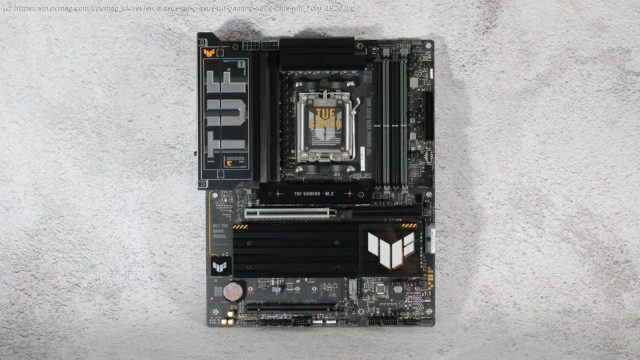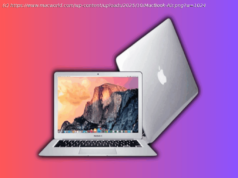A DIY-friendly board with the latest trimmings
What qualifies as «budget» in the motherboard market is relative. Asus’ TUF Gaming X870-Plus WiFi ($309.99) motherboards are budget-class for AMD’s top-shelf X870 chipset, and, according to Asus these boards are “engineered with military-grade components, an upgraded power solution and comprehensive cooling system [, which] also undergo rigorous endurance testing to ensure they can handle conditions where others may fail.” While the modern TUF boards are a far cry from the wholly robust early-generation TUF boards with all of the physical armor, protections, and shrouds, it’s still further than most go. The TUF Gaming X870-Plus WiFi has everything the new X870 chipset provides: USB4 (via the CPU), PCIe 5.0 connectivity, and Wi-Fi 7 (via a third-party controller). On top of all that, the board has your usual fare of additional USB ports, M.2 sockets (three total), and DIY-friendly features like the PCIe Slot Q-Release, Asus’ new M.2 latch, and the Q-Antenna/LED. This board is a fine X870 option—just watch out for a scarce two SATA ports, and prepare to pay a bit more than for some competing models.X870E vs. X870: What’s the Difference?
Before I begin, I’ll lay out the differences between the X870E/X870 chipsets and the X670E/X670. In summary, the X870E and its dual-chipset configuration provide the same number of total PCIe lanes (44) and guarantee the boards will have PCIe 5.0 NVMe and 5.0 PCIe slots. Additionally, the updated chipset has baked-in USB4 support that gives 40Gbps bandwidth (double the bandwidth of USB 3.2 Gen 2×2) and video support for integrated graphics via DisplayPort through the USB4 Type-C ports.
The X870 differs from the X870E because only one chipset chip exists in the former (one Promotory 21 chip). This change reduces the total number of PCIe lanes to 36. You’ll still get PCIe 5.0 on the NVMe storage and primary PCIe slot, as well as USB4, but you lose some back-end bandwidth for USB ports and expansion. Still, 36 lanes are plenty for most users, but the number of PCIe lanes didn’t shrink until the “B”-series chipsets in earlier generations. You won’t see a big difference bandwidth/lane-wise, but both natively support the Zen 5-based AMD chips, whereas X670/X670E does not (but does if you flash the BIOS to a supported version).Board Design: A Less Ostentatious TUF
The TUF Gaming X870-Plus sits on a black, eight-layer PCB with black heatsinks on any hot components. The VRM heatsinks have plenty of mass and surface area to cool the MOSFETs below effectively. The design element on top is large silver “TUF” branding with a matte finish. The primary M.2 socket uses a simple plate-style heatsink, while the two sockets in the middle of the board share a ribbed-style plate with the chipset. Asus has several features to make building and using your PC easier, but you’ll have to use tools to remove these M.2 heatsinks. You’ll find more TUF branding on the chipset’s EMI shield, which totally encapsulates the audio chip on five of six sides, covering the bottom left.
The TUF Gaming has a single RGB lighting element underneath the board by the chipset. In the same area, you’ll find a translucent part of the PCB illuminated from behind with the “TUF” branding. It won’t light up the room, but it gives off a neat glow inside your chassis. Overall, it’s an improvement compared with the X670E version. A neutral design theme will fit most build concepts well.
When discussing the board design, it’s important to address Asus’ heavy emphasis on AI features and what’s actually going on with the boards that use them. To be clear, these Asus motherboards have no AI-accelerating hardware resident on them but rather use Asus-made algorithms leveraged by the connected processor to power these features. On a related note, AMD Ryzen 9000 Zen 5 CPUs do not have dedicated AI processing hardware on their dies.CPU & Memory
Thanks to this board’s native support, you don’t have to flash the BIOS to get any Ryzen 9000 series AMD processor to work (though you should update the BIOS to the latest version for best results). Additionally, this board supports any Zen 4/Ryzen 7000 series desktop CPUs and the Ryzen 8000 series APUs.
Memory support on this platform increased, and in the case of our TUF, it is listed up to DDR5-8000+(OC), which is around the average for a budget-friendly X870 board. The four slots are reinforced (SafeDIMM) and support up to 256GB, which is plenty for even the most hard-core home users. Securing the RAM in place is a single-sided mechanism that locks at the top/away from the PCIe slot (where you have room to lock or unlock).
The baseline kit I use for testing and gathering data, a Kingston 2x16GB DDR5-6000 set, and a Teamgroup DDR5-7200 kit, both worked by enabling the baked-in profile on the sticks.






